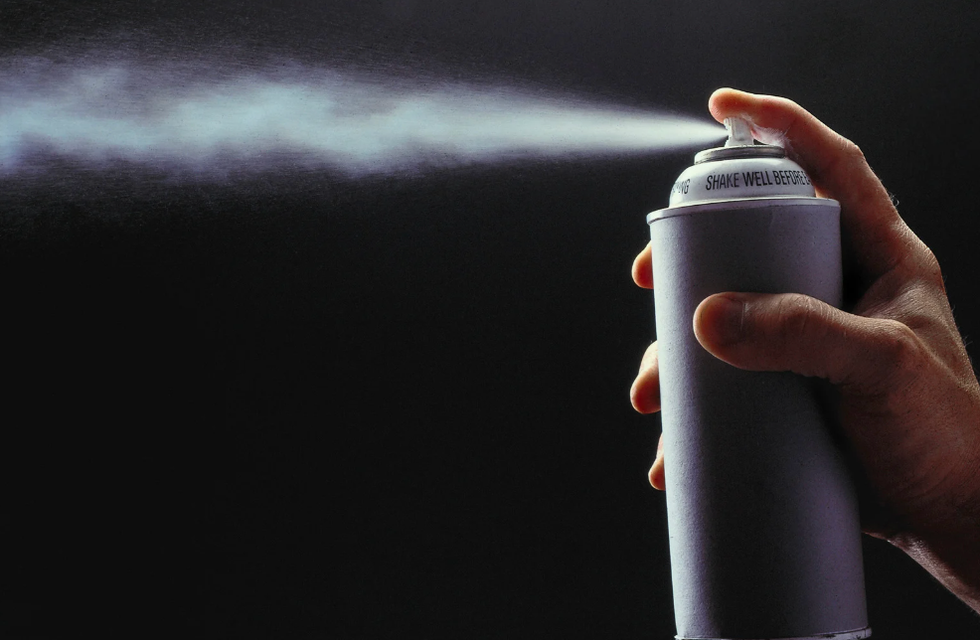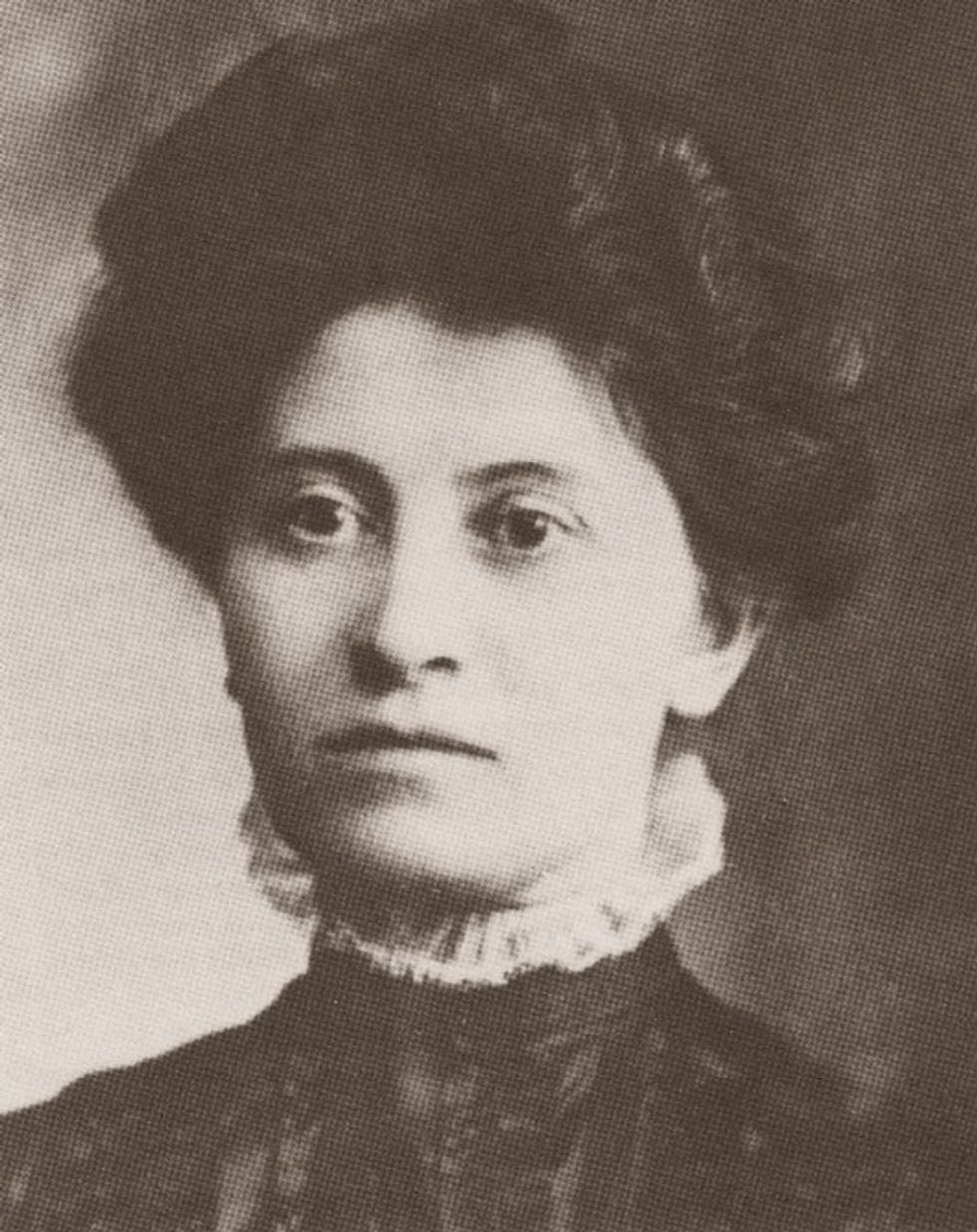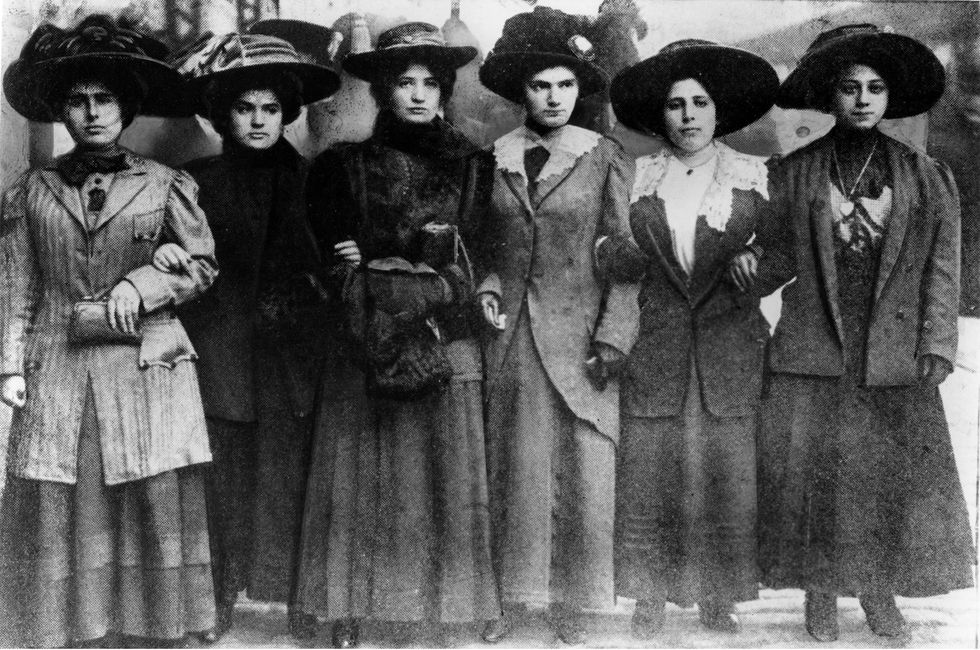You’ve strewn the rose petals about, drawn the curtains, and lit the candles. You’ve even put on some Barry White. You’re ready to seize Valentine’s Day by the horny goat weed and get some sex on. But first, wine and dine your one true love with delectable sex-foods to get them in “the mood.” (Don’t try to get them into just any mood. Hangry, for instance, is bad, so give the sex-food to your one true love at around 6:30 p.m.) But... you forgot to go shopping for sex-foods!? Hurry, rummage around in your pantry or fridge, because chances are you already have several of these on hand.
1) Arugula
Arugula, known as rocket to British and Australian people, may not be the first food you think of as an aphrodisiac, but it’s probably the realest—plus it’s one that people have known about for a long time. Ancient Roman poet Virgil once remarked that it “excites the sexual desire of drowsy people.” Nutritionists say that the cruciferous veggie is so full of antioxidents, phytochemicals, and essential vitamins including vitamins C, A, and K, beta carotene, lutein, zeaxanthin, folic acid, calcium, manganese, magnesium, potassium, iron, zinc, copper, and riboflavin. Each of these are linked to keeping your sexual health in order and spicing up your sex life, so dig into those leafy greens.
2) Celery
The aphrodisiac quality of celery is well-documented. From Homer’s Odyssey—where the nymph Calypso and Odysseus dined on them during their sex-filled, five-year tryst—to the 12th century Anglo-Norman story of the star-crossed Tristan and Iseult, who fell head-over-heels for each other after drinking a potion with celery juice in it. Casanova ate celery (along with oysters) while seducing 122 women, and Madame de Pompadour apparently fed the King Louis XV celery soup while his chief mistress.
Scientists have found that celery might live up to its historical standing. Inside the crunchy vegetable is androsterone, a naturally occurring steroid that can act as a pheromone, attracting females to their scented mate.
3) Chili peppers
Passionate love is often described as “spicy” and “hot,” so it makes sense that chili peppers are commonly brought up when discussing aphrodisiacs. (In fact, the chocolate that Montezuma ate before wooing his lovers was spiked with chilis.)
The real aphrodisiac effect may be due to capsaicin, the active, spicy part of a chili pepper. Anyone who’s ever had a chili pepper knows that it increases your pulse, makes you sweat, and raises your body temperature. Sound familiar? Essentially, the capsaicin in chili peppers makes our bodies react in ways akin to sexual arousal. What’s more, chili peppers have been known to increase endorphins, which make us happy. FYI: It’s easier to get aroused when you’re in a good mood.
4) Avocado
The sexy nature of the avocado also dates back to the Aztecs, who called avocados ahuacuatl, which translates to “testicle tree.” Its reputation has persisted, and it may have merit. Avocados contain potassium, beta carotene, magnesium, and vitamin E, the latter of which improves circulation in the body. It’s sometimes called the “sex vitamin.” Need we say more?
5) Bananas
The theory that bananas are aphrodisiacs can probably be linked to the fact that they look like big curved yellow penises. (Don’t @ me.) But they are also perhaps the truest aphrodisiac food available. They are chock-full of vitamin B and potassium, both of which are incredibly important in the production of sex hormones. They’re also filled with chelating minerals, which help the body absorb those nutrients quickly.
Bananas also contain riboflavin, which gives you energy, and the bromelain enzyme, which is thought to increase testosterone production. Quick tip: Bromelain is also found in pineapples. So offer your date a banana-pineapple smoothie, and get to work.
6) Honey
Around 500 BC, Hippocrates of Kos, the “Father of Modern Medicine,” used to prescribe honey to increase sexual vigor, and a combination of milk and honey for purposes of love and ecstasy. Avicenna, a Persian doctor from the 10th and 11th century, also advocated for the mixture of honey, ginger, and pepper as a sexual stimulant.
Honey was used as an aphrodisiac by the ancient Vikings, and in ancient Chinese wedding ceremonies, a goblet of honey was tied together with a goblet of wine and then sipped upon by the bride and groom to symbolize their union. Honey is still used in Indian weddings today.
But is there any truth to honey being an aphrodisiac? Actually, yes. Honey contains boron, which may regulate testosterone and help metabolize estrogen, and nitric oxide, a chemical released into the blood during arousal.
7) Watermelon
Watermelon isn’t usually thought of as an aphrodisiac, but it’s one of the best foods for sexual health out there. It’s apt to consider it the Viagra of the food world, due to one of watermelon’s phytonutrients, citrulline. According to a study conducted by Dr. Bhimu Patil at Texas A&M’s Vegetable and Fruit Improvement Center, citrulline relaxes blood vessels—exactly the effect Viagra has. In the body, citrulline is converted to L-argenine, which boosts nitric oxide, making for easy arousal.
8) Granola
L-argenine is also found in oats, peanuts, cashews, walnuts, and seeds. So, if you’re looking for some post-breakfast nookie, we suggest some granola made with these ingredients.
9) Figs
Ken Russell’s 1969 film Women in Love, based on the D.H. Lawrence novel, has a brilliant scene in which the sexual nature of the fig is articulated at a picnic. “The proper way to eat a fig, in society, is to split it in four, holding it by the stub, and open it so that it is a glittering, rosy, moist, honeyed, heavy-petaled, four-petaled flower,” says Rupert Birkin, played by Alan Bates. “Then you throw away the skin after you have taken off the blossom with your lips. But the vulgar way is just to put your mouth to the crack and take out the flesh in one bite. The fig is a very secretive fruit. The Italians vulgarly say it stands for the female part, the fig fruit, the fissure, the yoni, the wonderful, moist conductivity towards the center … ”
The erotic speech isn’t off base. Figs have long been considered an aphrodisiac, which some say may trace back to the Bible, where it was one of the fruits of the Garden of Eden. Some even say it might even be the true forbidden fruit.
But this tale has persisted pretty much entirely due to reputation. There’s a bit of potassium in figs, which is known to help with sex hormones, but there’s little else to prove their ability to stir the loins.
10) Pomegranate
Remember Aphrodite, the goddess of love? Apparently, in Greek mythology, she planted the first pomegranate tree. Later in folklore, the pomegranate may have been the actual forbidden fruit—not the fig. The mythological nature of the fruit’s sexy reputation may be due to its many seeds, leading to the belief that they’re fertile. There is little evidence, however, to suggest that eating pomegranate seeds increases sex drive.
11) Beets
According to myth, Aphrodite also ate lots of beets in order to improve her looks. Ancient Romans took those stories to heart, believing a steady diet of beets and beet juice would keep them sexually healthy. They even decorated the walls of brothels with images of beets. Beets’ blood red color might have fed into this belief, connecting it to another famously red organ—the heart.
Beets are another one of these so-called aphrodisiacs that might pan out. They contain potassium, vitamins A, B, and C, tryptophan, betaine, and boron, which are all connected with sexual function.
12) Asparagus
Okay, so asparagus can make your pee smell funny, but it’s also considered one of the most powerful aphrodisiacs available. Even the Kama Sutra recommends eating asparagus as a paste. The Greeks and the French, both well known for their sexual prowess, both laud the eating of asparagus; the Greeks wrote poetry of its powers, and French diets used to consist of large amounts of asparagus to increase libido.
The thing is, asparagus is really packed with sexually stimulating stuff, including calcium, vitamin E, and potassium. Aspartic acid, found in asparagus, can apparently help neutralize the ammonia in our bodies. Too much ammonia leads to sexual disinterest. So logic dictates that more asparagus leads to more sexual interest.
13) Ginger
If you dig around on the internet long enough, you’ll find pretty much anything. This includes stories of people putting ginger on their penises to make them grow. It actually comes from Chinese homeopathy, which recommends placing ginger, honey, and fennel on the bellybutton. A similar treatment in India uses ginger, eggs, and honey to cure impotence. Confucious ate ginger to increase his libido, and the root is mentioned in both the Qur’an—it’s served at banquets in paradise—and the Kama Sutra.
The reality is that ginger warms your body temperature, making your body think it’s aroused, and then, voila!—you’re aroused and ready to go. Ginger can also stimulate the body’s circulation, pushing blood into the far reaches of your body, and making those parts—including the private ones—sensitive. A study at the College of Medicine at the University of Ibadan in Nigeria in 2002 found that ginger increased testosterone levels in rats.
14) Horny goat weed
This isn’t so much a food as a supplement, but we see it sold in pill form at the counters of bodegas next to the condoms, so we decided to look into it. It’s actually an herb that’s been used for thousands of years in Chinese homeopathic medicine to increase libido. Also known as epimedium, the flowering plant is hypothesized to increase testosterone, though this is based off of one study in rats, and has never been independently confirmed. The compounds found in horny goat weed—icariin, icaritin, and desmethylicaritin—have been linked to both testosterone and estrogen production, but, again, there are very few studies.
There are dozens of other foods considered to be aphrodisiacs that you can find in your fridge or cupboard, including ginseng, basil, cinnamon, dates, garlic, nutmeg, pumpkin seeds, root vegetables, soybeans, chickpeas, and tomato. Happy eating!
Photos edited by Yumi Abe
















 Freddie Mercury GIF by Queen
Freddie Mercury GIF by Queen File:Statue of Freddie Mercury in Montreux 2005-07-15.jpg - Wikipedia
File:Statue of Freddie Mercury in Montreux 2005-07-15.jpg - Wikipedia
 The hole in the ozone layer in 2015.Photo credit: Wikimedia Commons
The hole in the ozone layer in 2015.Photo credit: Wikimedia Commons In the 1980s, CFCs found in products like aerosol spray cans were found to cause harm to our ozone layer.Photo credit: Canva
In the 1980s, CFCs found in products like aerosol spray cans were found to cause harm to our ozone layer.Photo credit: Canva Group photo taken at the 30th Anniversary of the Montreal Protocol. From left to right: Paul Newman (NASA), Susan Solomon (MIT), Michael Kurylo (NASA), Richard Stolarski (John Hopkins University), Sophie Godin (CNRS/LATMOS), Guy Brasseur (MPI-M and NCAR), and Irina Petropavlovskikh (NOAA)Photo credit: Wikimedia Commons
Group photo taken at the 30th Anniversary of the Montreal Protocol. From left to right: Paul Newman (NASA), Susan Solomon (MIT), Michael Kurylo (NASA), Richard Stolarski (John Hopkins University), Sophie Godin (CNRS/LATMOS), Guy Brasseur (MPI-M and NCAR), and Irina Petropavlovskikh (NOAA)Photo credit: Wikimedia Commons
 Getting older means you're more comfortable being you.Photo credit: Canva
Getting older means you're more comfortable being you.Photo credit: Canva Older folks offer plenty to young professionals.Photo credit: Canva
Older folks offer plenty to young professionals.Photo credit: Canva Eff it, be happy.Photo credit: Canva
Eff it, be happy.Photo credit: Canva Got migraines? You might age out of them.Photo credit: Canva
Got migraines? You might age out of them.Photo credit: Canva Old age doesn't mean intimacy dies.Photo credit: Canva
Old age doesn't mean intimacy dies.Photo credit: Canva
 Theresa Malkiel
commons.wikimedia.org
Theresa Malkiel
commons.wikimedia.org
 Six Shirtwaist Strike women in 1909
Six Shirtwaist Strike women in 1909
 University President Eric Berton hopes to encourage additional climate research.Photo credit: LinkedIn
University President Eric Berton hopes to encourage additional climate research.Photo credit: LinkedIn
 Image by Ildar Sajdejev via GNU Free License | Know your rights.
Image by Ildar Sajdejev via GNU Free License | Know your rights.